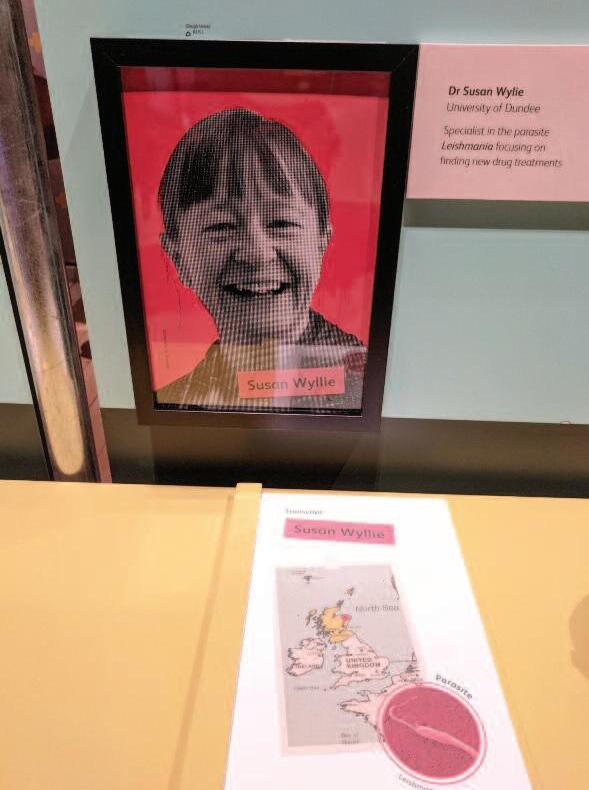
3 minute read
The Mode of Action group
The development of new drugs to treat kinetoplastid and other infectious diseases has been hampered by a severe lack of robustly validated drug targets This has left drug discovery programs heavily reliant upon phenotypic screening in which large compound libraries are screened directly against parasites to identify suitable chemical start points, ‘hits’ This provides direct evidence of compounds that are known to kill or hinder growth of parasites However, the downstream development and optimisation of these phenotypically active compounds are often hindered by lack of information regarding mechanism(s) of action and/or molecular target(s) Specifically, knowledge of molecular targets is often crucial in developing strategies to overcome issues such as poor pharmacokinetics and toxicity
When the targets of active compounds are identified this information can then be used to support target-based and structure-enabled drug discovery programmes. Thus, mode of action studies can effectively integrate these two major, often disconnected, approaches to drug discovery
Advertisement
The Mode of Action (MoA) group, led by Dr Susan Wyllie, was established in 2015 specifically to focus on determining the MoA and/or molecular targets of compounds that are phenotypically active against kinetoplastid parasites
This multidisciplinary approach to drug target deconvolution has proven extremely effective, with the molecular targets of over 40 compound series (including 4 pre-clinical candidates) identified to date 1
Historically, MoA studies have been of secondary consideration for drugs being developed for NTD If these studies were carried out at all, they were initiated after the development of pre-clinical or clinical candidates A significant point of difference for the MoA group, compared to others working in this area, is their ability to provide MoA input and information in real-time for on-going drug discovery programmes This enables the data they provide to guide and indeed drive the evolution of the best possible drug candidates. The team now effectively underpins the drug discovery programmes within WCAIR and works with multiple academic groups and key stakeholders in NTD drug discovery from around the world. Indeed, through the work of the MoA group, the molecular targets of the majority of assets in preclinical and clinical development within the DNDi kinetoplastid portfolio have now been established 2 . Ultimately, their studies play an important role in accelerating the delivery of better, safer compounds to clinic
Capitalising on their experience in kinetoplastids and supported by a pump-priming grant from WCAIR, the team is now applying its multidisciplinary approach to support drug target deconvolution in other pathogens, in particular Plasmodium 3 , the parasite responsible for malaria The team are now key members of the prestigious the Bill & Melinda Gates Foundation funded “Malaria Drug Accelerator” consortium (MalDA)
References
1 Preclinical candidate for the treatment of visceral leishmaniasis that acts through proteasome inhibition Wyllie S, Brand S, Thomas M, De Rycker M, et al Proc Natl Acad Sci U S A 2019 May 7;116(19):9318-9323
2 DNDI-6148: A novel benzoxaborole preclinical candidate for the treatment of visceral leishmaniasis Mowbray, C, Braillard, S, Glossop, PA, and Wyllie, S. J. Med. Chem 2021 Nov 11; 64(21):16159-16176.
3 Potent acyl-CoA synthetase 10 inhibitors kill Plasmodium falciparum by disrupting triglyceride formation Bopp S, Pasaje CFA, Summers RL, Magistrado-Coxen P, et al Nat Commun 2023 Mar 16;14(1):1455










